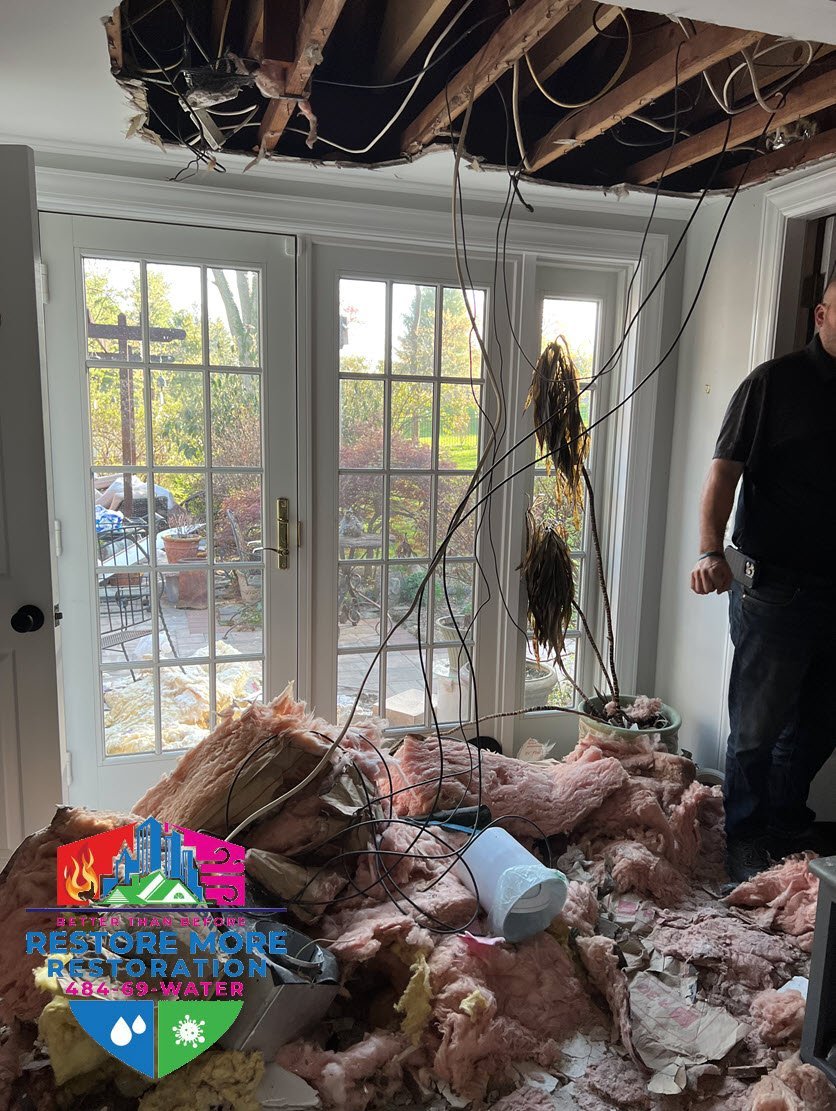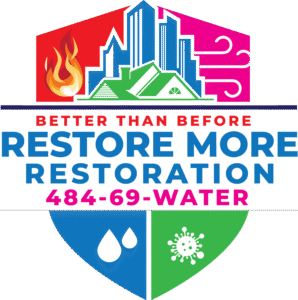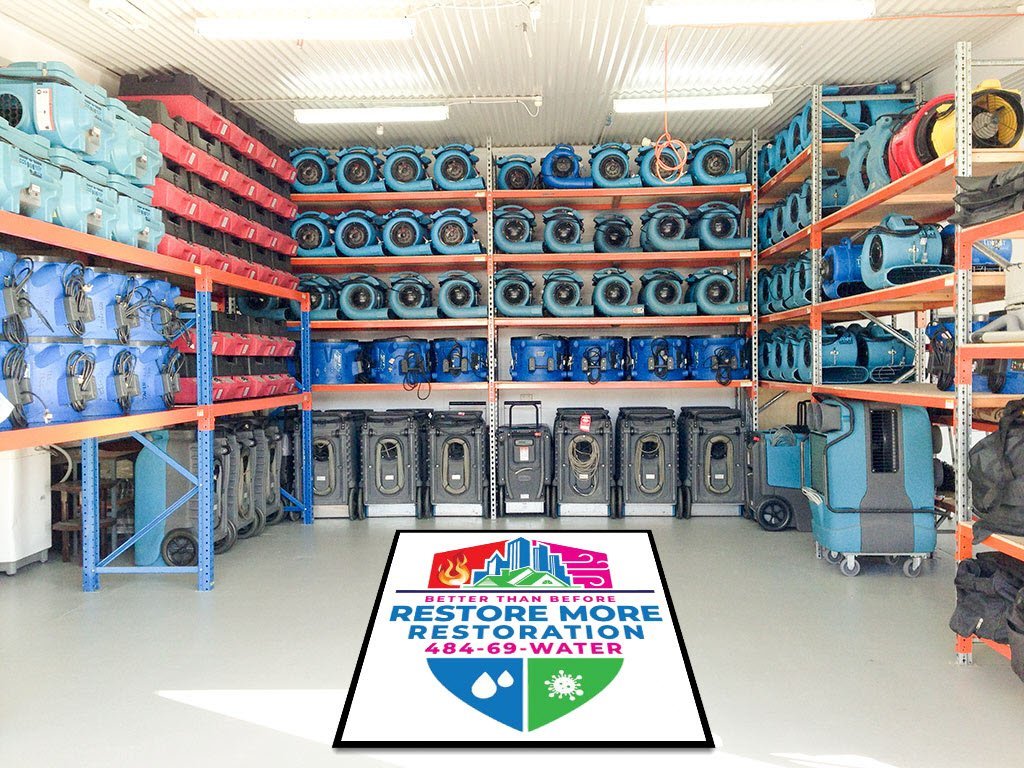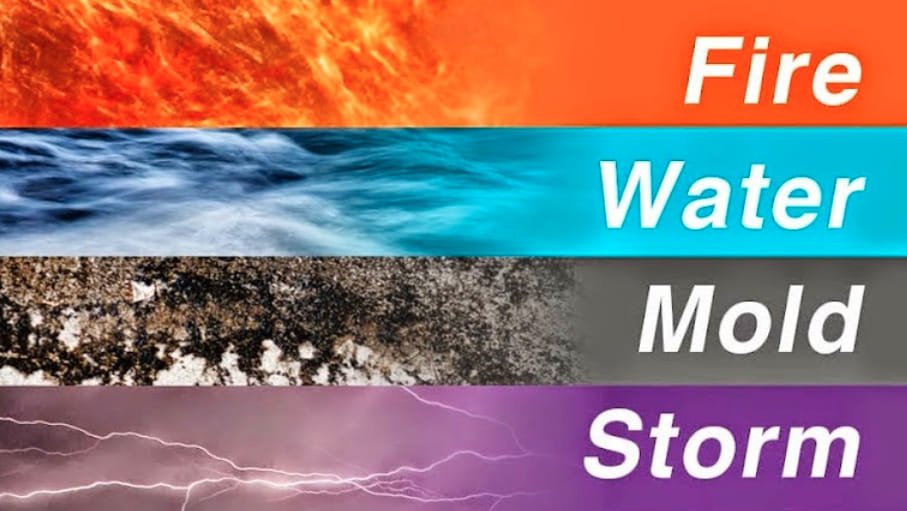Professional Fire Damage Restoration Services
When fire strikes your property, the devastation extends far beyond the flames themselves. Smoke, soot, and water damage from firefighting efforts can affect every corner of your building, creating a complex restoration challenge that requires specialized expertise and immediate attention. Fire damage restoration is a critical service that helps property owners recover from one of the most traumatic disasters they may ever face.
At waterdamagecleanupgarnetvalleypa.com, we understand the overwhelming nature of fire damage and connect property owners throughout Garnet Valley and Delaware County with the most experienced fire damage restoration professionals in the region. Our trusted partner, RestoreMore365, specializes in comprehensive fire damage restoration, combining advanced techniques with compassionate service to help families and businesses rebuild their lives after fire disasters.
Understanding Fire Damage and Its Complexities
Fire damage is among the most complex types of property damage to restore, involving multiple interconnected challenges that require specialized knowledge and equipment. According to the National Fire Protection Association, fire departments in the United States respond to a fire every 24 seconds, with structure fires accounting for significant property damage and displacement of families and businesses.
The complexity of fire damage stems from the fact that fires rarely cause damage through flames alone. The restoration process must address multiple types of damage simultaneously, including direct fire damage, smoke damage, soot contamination, water damage from firefighting efforts, and potential structural compromise. Each of these elements requires different restoration techniques and specialized equipment.
Types of Fire Damage
Understanding the different types of fire damage is crucial for developing an effective restoration strategy:
Direct Fire Damage Direct fire damage occurs when flames come into contact with materials, causing burning, charring, and complete destruction. This type of damage is often the most visible but may not represent the full extent of restoration needed.
Smoke Damage Smoke damage can affect areas far from the actual fire, penetrating porous materials and leaving behind persistent odors and discoloration. Smoke particles are microscopic and can infiltrate HVAC systems, spreading contamination throughout the entire structure.
Soot Damage Soot is a black, powdery substance created during incomplete combustion. It can coat surfaces throughout the property and is particularly challenging to remove because it can become permanently embedded in porous materials if not addressed quickly and properly.
Water Damage from Firefighting The water used to extinguish fires often causes significant secondary damage. This water can saturate building materials, create ideal conditions for mold growth, and cause structural damage if not properly extracted and dried.
Heat and Thermal Damage Even areas not directly touched by flames can suffer heat damage, including warping, cracking, and weakening of structural elements. Heat can also cause materials to expand and contract, leading to hidden damage that may not be immediately apparent.
The Professional Fire Damage Restoration Process
Professional fire damage restoration follows a systematic approach designed to address all aspects of fire damage while ensuring the safety of workers and future occupants. Here’s what you can expect when working with certified fire restoration professionals:
1. Emergency Response and Safety Assessment
The fire restoration process begins with immediate emergency response. Reputable companies like RestoreMore365 provide 24/7 emergency services because fire damage continues to worsen every hour that passes without professional intervention. The first priority is always safety, with technicians conducting thorough assessments to identify structural hazards, electrical dangers, and air quality issues.
During the initial assessment, restoration professionals will secure the property by boarding up damaged windows and doors, tarping damaged roofs, and implementing other measures to prevent further damage from weather, vandalism, or unauthorized entry. This immediate protection is crucial for preserving what can be saved and preventing additional losses.
2. Damage Assessment and Documentation
Once the property is secured, certified technicians conduct a comprehensive damage assessment. This involves documenting all visible damage, testing for hidden damage using specialized equipment, and creating a detailed restoration plan. Advanced tools such as thermal imaging cameras help identify heat damage that may not be visible to the naked eye.
The documentation process is critical for insurance claims and includes detailed photographs, measurements, and written descriptions of all damage. This thorough documentation helps ensure that property owners receive fair compensation for their losses and that nothing is overlooked during the restoration process.
3. Water Extraction and Structural Drying
If water damage is present from firefighting efforts, it must be addressed immediately to prevent mold growth and additional structural damage. Professional-grade extraction equipment removes standing water, while industrial dehumidifiers and air movers create optimal drying conditions for affected materials.
The drying process for fire-damaged properties often takes longer than typical water damage situations because fire can compromise the structural integrity of materials, making them more susceptible to moisture retention. Continuous monitoring ensures that all materials reach appropriate moisture levels before proceeding with other restoration activities.
4. Smoke and Soot Removal
Smoke and soot removal is one of the most specialized aspects of fire damage restoration. Different types of fires create different types of smoke and soot, each requiring specific cleaning techniques and products. Protein fires, synthetic material fires, and natural material fires all leave behind different residues that must be addressed with appropriate methods.
Professional restoration technicians use specialized equipment including HEPA air scrubbers, ozone generators, and thermal foggers to remove smoke particles from the air and surfaces. Surfaces are cleaned using specific techniques designed for different materials, ensuring that smoke and soot are completely removed without causing additional damage.
5. Odor Elimination
Fire odors can be persistent and pervasive, affecting the entire structure even in areas that weren’t directly damaged by fire. Professional odor elimination goes beyond masking smells—it involves identifying and neutralizing the source of odors at the molecular level.
Advanced odor elimination techniques include ozone treatment, hydroxyl generation, and thermal fogging with specialized deodorizing agents. The specific method used depends on the type of fire, the materials involved, and the extent of odor penetration throughout the structure.
6. Content Cleaning and Restoration
Fire damage affects not only the structure but also personal belongings and business contents. Professional restoration companies have specialized facilities and techniques for cleaning and restoring fire-damaged contents, including electronics, documents, textiles, and artwork.
Content restoration often involves pack-out services, where damaged items are carefully inventoried, transported to specialized cleaning facilities, and restored using appropriate techniques. This service can save thousands of dollars in replacement costs and help preserve items with sentimental or historical value.
7. Structural Repairs and Reconstruction
The final phase of fire damage restoration involves repairing and reconstructing damaged structural elements. This can range from minor repairs like replacing drywall and repainting to major reconstruction involving structural framing, roofing, and complete room rebuilds.
Many restoration companies offer complete reconstruction services, allowing property owners to work with a single contractor throughout the entire process. This continuity ensures consistent quality and communication while simplifying the complex process of fire damage recovery.
Why Professional Fire Damage Restoration is Essential
Fire damage restoration is not a DIY project. The complexity of fire damage, combined with health and safety risks, makes professional restoration essential for several critical reasons:
Health and Safety Considerations
Fire-damaged properties contain numerous health hazards that require specialized training and equipment to address safely. Smoke particles, soot, and combustion byproducts can be toxic, while structural damage can create physical safety risks. Professional restoration technicians have the training and protective equipment necessary to work safely in these environments.
Additionally, many fire-damaged materials contain asbestos or other hazardous substances that require special handling and disposal procedures. Professional restoration companies are licensed and trained to handle these materials safely and in compliance with environmental regulations.
Specialized Equipment and Techniques
Fire damage restoration requires specialized equipment that’s not available to consumers. This includes industrial air scrubbers, ozone generators, thermal foggers, and specialized cleaning products designed for different types of smoke and soot damage. Professional restoration companies invest in this equipment and train their technicians in its proper use.
Insurance Claim Expertise
Fire damage insurance claims are often complex, involving multiple types of damage and extensive documentation requirements. Professional restoration companies have experience working with insurance companies and can help ensure that claims are properly documented and processed. This expertise can be invaluable in securing fair compensation for losses.
Time-Critical Response
Fire damage continues to worsen over time, with smoke and soot becoming more difficult to remove and odors becoming more embedded in materials. Professional restoration companies understand the time-critical nature of fire damage and have the resources to respond quickly and work efficiently to minimize ongoing damage.
Common Causes of Fire Damage in Garnet Valley
Understanding the common causes of fires in the Garnet Valley area can help property owners take preventive measures and respond appropriately when fires occur. Local factors including housing age, climate conditions, and common heating systems create specific fire risks that residents should be aware of.
Electrical Fires
Electrical fires are among the most common causes of residential fires, often resulting from overloaded circuits, faulty wiring, or defective electrical appliances. Older homes in the Garnet Valley area may be particularly susceptible to electrical fires due to aging wiring systems that weren’t designed to handle modern electrical loads.
Regular electrical inspections and prompt repair of electrical issues can help prevent many electrical fires. However, when electrical fires do occur, they often cause extensive damage because they can smolder undetected within walls before breaking out into open flames.
Heating System Fires
Heating systems, including furnaces, fireplaces, and space heaters, are common sources of residential fires, particularly during colder months. Poor maintenance, blocked vents, and improper use of heating equipment can all lead to fires.
For property owners dealing with heating-related fire damage, our specialized emergency water damage page provides information about addressing the water damage that often accompanies heating system fires due to sprinkler activation or firefighting efforts.
Kitchen Fires
Cooking fires are the leading cause of residential fires, accounting for nearly half of all home fires. Unattended cooking, overheating oil, and equipment malfunctions can all lead to kitchen fires that can quickly spread throughout the home.
Kitchen fires often create significant smoke and grease damage that extends far beyond the kitchen itself, requiring specialized cleaning techniques to address grease residue and persistent odors.
Wildfire and External Fire Sources
While less common in the Garnet Valley area, external fire sources including wildfires, neighboring structure fires, and outdoor burning can affect local properties. These fires often create extensive smoke damage even when direct fire damage is minimal.
Fire Prevention Strategies
While not all fires can be prevented, property owners can take several steps to reduce their fire risk and minimize potential damage when fires do occur:
Regular Maintenance and Inspections
Routine maintenance of electrical systems, heating equipment, and appliances is crucial for fire prevention. This includes annual inspections of furnaces and chimneys, regular cleaning of dryer vents, and prompt repair of electrical issues.
Smoke Detection and Fire Suppression Systems
Properly installed and maintained smoke detectors provide early warning that can save lives and reduce property damage. Fire suppression systems, including sprinkler systems, can help control fires before they spread extensively.
Emergency Preparedness
Having a fire emergency plan helps ensure the safety of occupants and can help minimize property damage. This includes knowing evacuation routes, having emergency contact information readily available, and understanding basic fire safety procedures.
For comprehensive emergency preparedness information specific to the Garnet Valley area, visit our storm damage cleanup page, which includes guidance on preparing for various types of emergencies.
Proper Storage and Housekeeping
Proper storage of flammable materials and good housekeeping practices can help prevent fires and limit their spread. This includes keeping combustible materials away from heat sources and maintaining clear escape routes.
Specialized Fire Damage Restoration Services
Different types of fires and fire damage scenarios require specialized restoration approaches. Professional restoration companies offer various specialized services to address specific situations:
Smoke Damage Restoration
Smoke damage can be more extensive than fire damage itself, affecting areas throughout the structure. Specialized smoke damage restoration involves identifying the type of smoke, selecting appropriate cleaning methods, and using advanced equipment to remove smoke particles and odors.
Electronics and Equipment Restoration
Fire and smoke damage can affect sensitive electronics and equipment, but specialized restoration techniques can often save these valuable items. This involves disassembly, specialized cleaning, and testing to ensure proper function after restoration.
Document and Media Recovery
Important documents, photographs, and digital media can often be recovered even after significant fire damage. Specialized document recovery services use freeze-drying, specialized cleaning, and digital recovery techniques to salvage irreplaceable items.
Textile and Upholstery Restoration
Fire-damaged textiles, including clothing, curtains, and upholstered furniture, often require specialized cleaning techniques. Professional restoration companies have the equipment and expertise to clean and deodorize these items effectively.
Working with Insurance After Fire Damage
Fire damage insurance claims are often complex, involving multiple types of damage and extensive documentation. Understanding the insurance process can help ensure a smoother experience:
Immediate Steps After a Fire
Contact your insurance company immediately after a fire to report the claim and begin the documentation process. Take photographs of all damage, but don’t begin cleanup until the insurance adjuster has assessed the damage.
Understanding Coverage
Fire insurance policies typically cover direct fire damage, smoke damage, and water damage from firefighting efforts. However, coverage details vary, and understanding your specific policy is important for ensuring all covered damages are properly claimed.
Working with Adjusters
Insurance adjusters will assess the damage and determine coverage amounts. Professional restoration companies work directly with adjusters to provide technical information about the damage and restoration requirements, helping ensure fair settlements.
Additional Living Expenses
Many fire insurance policies include coverage for additional living expenses if your home is uninhabitable during restoration. This can include hotel costs, restaurant meals, and other expenses incurred while your home is being restored.
The Emotional Impact of Fire Damage
Fire damage affects more than just property—it can have significant emotional and psychological impacts on property owners and their families. Professional restoration companies understand this and provide compassionate service that addresses both the technical and emotional aspects of fire recovery.
Trauma and Stress Management
Experiencing a fire can be traumatic, and the restoration process can add additional stress. Professional restoration companies work to minimize this stress by handling insurance communications, providing clear timelines, and keeping property owners informed throughout the process.
Preserving Memories and Valuables
Professional restoration companies understand the importance of personal belongings and work diligently to save and restore items with sentimental value. This includes specialized cleaning and restoration techniques for photographs, documents, and family heirlooms.
Community Support and Resources
The Garnet Valley community offers various resources for fire victims, including temporary housing assistance, clothing donations, and emotional support services. Professional restoration companies often maintain relationships with these community resources and can help connect clients with appropriate assistance.
Our Recommended Partner: RestoreMore365
After extensive evaluation of fire damage restoration companies serving the Garnet Valley area, we confidently recommend RestoreMore365 as the premier choice for fire damage restoration services. Here’s why they excel in fire damage restoration:
Comprehensive Fire Damage Expertise
RestoreMore365 has extensive experience with all types of fire damage, from small kitchen fires to major structural fires. Their technicians are trained in the latest fire damage restoration techniques and use state-of-the-art equipment to ensure thorough and effective restoration.
Advanced Smoke and Odor Elimination
The team at RestoreMore365 uses advanced techniques for smoke and odor elimination, including ozone treatment, hydroxyl generation, and thermal fogging. They understand that eliminating odors is crucial for making properties livable again and use proven methods to achieve complete odor elimination.
Complete Reconstruction Services
RestoreMore365 offers complete reconstruction services, allowing clients to work with a single contractor from initial emergency response through final reconstruction. This continuity ensures consistent quality and communication throughout the restoration process.
Compassionate Service
Understanding the emotional impact of fire damage, RestoreMore365 provides compassionate service that addresses both the technical and emotional aspects of fire recovery. Their team takes time to explain the restoration process, answer questions, and provide support throughout the recovery journey.
Insurance Claim Assistance
The RestoreMore365 team has extensive experience working with insurance companies and helps clients navigate the complex claims process. They provide detailed documentation, work directly with adjusters, and advocate for fair settlements that cover all necessary restoration work.
Quality Assurance in Fire Damage Restoration
Professional fire damage restoration companies implement comprehensive quality assurance measures to ensure successful outcomes:
Air Quality Testing
Before considering a fire restoration project complete, professional companies conduct air quality testing to ensure that all smoke particles and contaminants have been removed. This testing provides objective verification that the property is safe for occupancy.
Moisture Monitoring
If water damage is present from firefighting efforts, continuous moisture monitoring ensures that all affected materials are properly dried before reconstruction begins. This prevents future mold problems and ensures structural integrity.
Odor Verification
Professional restoration companies use both technical testing and sensory evaluation to verify that all fire odors have been eliminated. This may include bringing in independent evaluators to confirm that odor elimination is complete.
Final Inspections
Comprehensive final inspections ensure that all restoration work meets industry standards and client expectations. This includes checking all repaired and reconstructed areas, testing systems and equipment, and verifying that the property is ready for occupancy.
Advanced Fire Damage Restoration Technologies
Modern fire damage restoration utilizes advanced technologies that improve efficiency and effectiveness:
Thermal Imaging
Thermal imaging cameras help identify hidden heat damage and moisture retention that may not be visible to the naked eye. This technology ensures that all damage is identified and addressed during the restoration process.
HEPA Filtration
High-efficiency particulate air (HEPA) filtration systems remove microscopic smoke particles from the air, ensuring thorough air cleaning during the restoration process.
Hydroxyl Generation
Hydroxyl generators create hydroxyl radicals that break down odor molecules at the molecular level, providing effective odor elimination without the safety concerns associated with ozone treatment.
Ultrasonic Cleaning
Ultrasonic cleaning technology uses high-frequency sound waves to remove soot and smoke residue from delicate items and hard-to-reach areas, providing thorough cleaning without damage.
Preventing Secondary Damage After Fire
Preventing secondary damage is crucial for minimizing restoration costs and ensuring successful outcomes:
Immediate Property Protection
Professional restoration companies provide immediate property protection services, including board-up, tarping, and security measures to prevent additional damage from weather, vandalism, or unauthorized entry.
Rapid Water Extraction
If water damage is present from firefighting efforts, rapid extraction and drying prevent mold growth and additional structural damage. Professional companies have the equipment and expertise to handle large-scale water extraction efficiently.
Corrosion Prevention
Smoke and soot can cause corrosion of metal surfaces and electronic equipment. Professional restoration includes corrosion prevention treatments that protect these items from ongoing damage.
Environmental Considerations in Fire Damage Restoration
Fire damage restoration must address various environmental considerations:
Hazardous Material Handling
Fire-damaged materials may contain asbestos, lead, or other hazardous substances that require special handling and disposal. Professional restoration companies are licensed and trained to handle these materials safely and in compliance with environmental regulations.
Waste Disposal
Fire damage creates large amounts of debris that must be properly sorted and disposed of according to environmental regulations. Professional restoration companies handle this process efficiently and responsibly.
Air Quality Protection
During restoration work, professional companies use containment and filtration systems to protect air quality in surrounding areas and prevent the spread of contaminants.
The Future of Fire Damage Restoration
The fire damage restoration industry continues to evolve with new technologies and techniques:
Advanced Cleaning Technologies
New cleaning technologies, including nanotechnology applications and advanced chemical formulations, provide more effective cleaning with less environmental impact.
Improved Detection Methods
Advanced detection methods help identify hidden damage more accurately, ensuring that all damage is addressed during the restoration process.
Sustainable Restoration Practices
The industry is moving toward more sustainable restoration practices, including the use of environmentally friendly cleaning products and waste reduction strategies.
Conclusion
Fire damage restoration is a complex process that requires specialized expertise, advanced equipment, and compassionate service. The key to successful fire damage recovery is choosing a qualified restoration company that understands the technical challenges and emotional impact of fire damage.
For property owners in Garnet Valley and surrounding areas, RestoreMore365 provides the expertise, equipment, and compassionate service needed for successful fire damage restoration. Their comprehensive approach addresses all aspects of fire damage, from initial emergency response through final reconstruction, ensuring that properties are restored to their pre-damage condition or better.
Don’t face fire damage alone—professional help is available 24/7 to begin the restoration process and help you rebuild your life after a fire. The sooner you contact professional restoration services, the better the outcome will be for both your property and your peace of mind.
For more information about related services, visit our pages on water damage restoration, mold remediation, and basement water damage. Our comprehensive FAQ section also provides answers to common questions about fire damage restoration and the recovery process.
Remember, fire damage restoration is not just about repairing property—it’s about restoring lives and helping families and businesses move forward after one of the most challenging experiences they may ever face.




